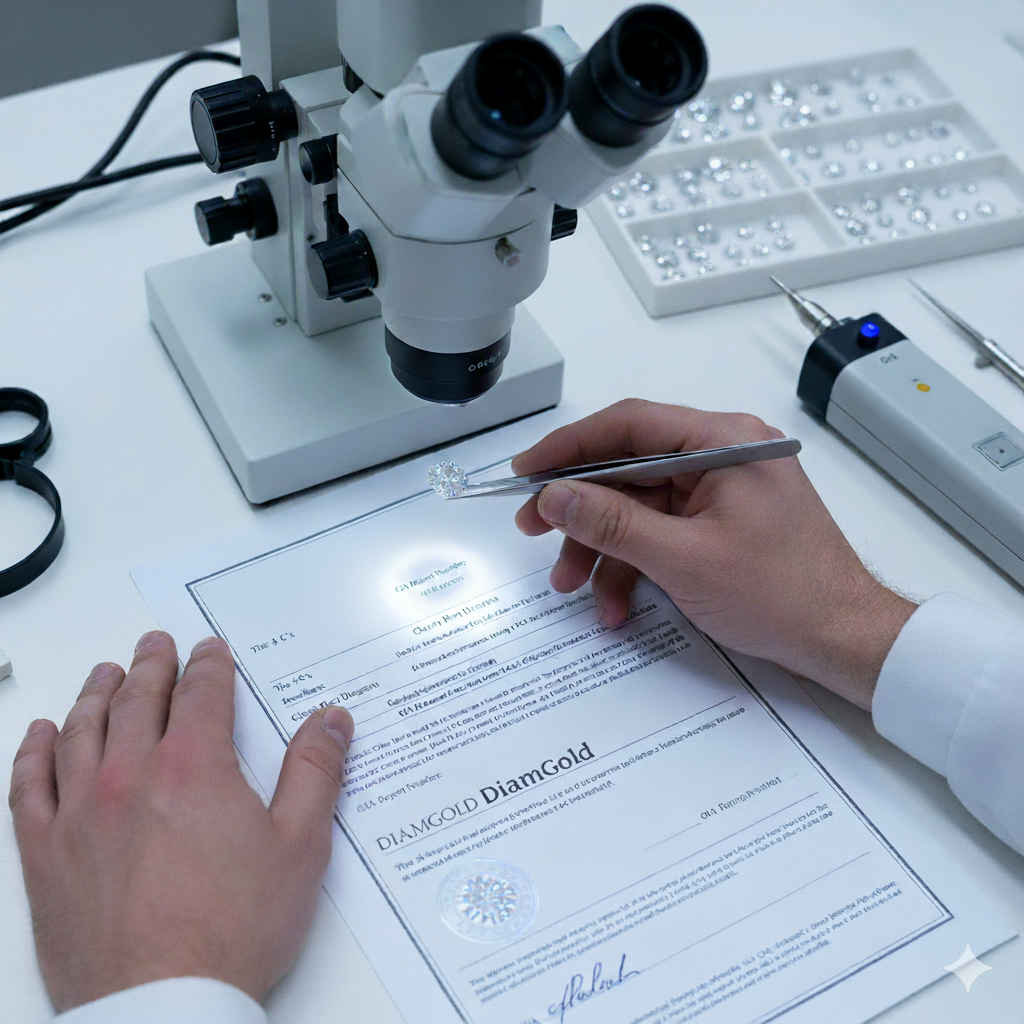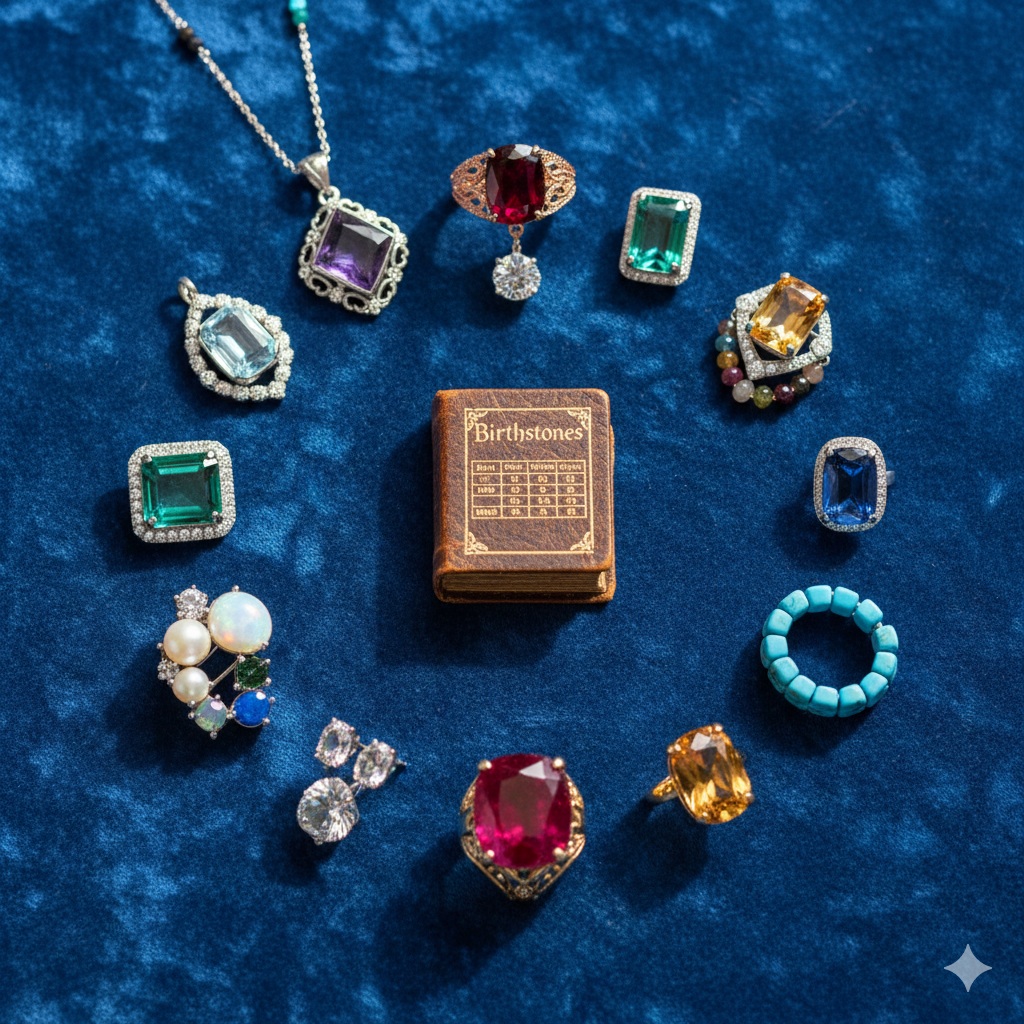💎 Why the Certificate Matters: A Guide to Diamond Grading Labs and the GIA Standard
When purchasing a diamond, the most crucial document you receive is the grading report, often called a diamond certificate. This report is your assurance of the stone’s quality, authenticity, and value. It is issued by an independent, third-party gemological laboratory, which employs trained gemologists to analyze the stone according to established standards.
Understanding which labs are the most trustworthy is vital for any consumer or industry professional. While several respected organizations exist, one stands out globally as the unquestioned gold standard—the Gemological Institute of America (GIA).
GIA: The Global Benchmark for Diamond Grading
The Gemological Institute of America (GIA) is a non-profit organization that is widely regarded as the most authoritative and consistent voice in the world of diamond grading.
The GIA Legacy: Inventing the 4Cs
The importance of the GIA to the jewelry industry cannot be overstated:
- The 4Cs: The GIA literally invented the 4Cs (Cut, Color, Clarity, and Carat Weight) in the 1950s. This revolutionary system provided a common, universal language for describing diamond quality, ending the confusion caused by proprietary grading terms used by different dealers.
- The D-to-Z Color Scale: The GIA established the standardized color scale that begins with the letter D (colorless) and ends with Z (light yellow or brown), setting a consistent benchmark that all other labs follow.
- Consistency and Objectivity: The GIA is renowned for its strict and consistent grading standards. Diamonds are evaluated anonymously by multiple experts using advanced instruments, ensuring the final grade is impartial and accurate. This consistency is why a GIA-certified diamond often commands a higher price and retains better value than a stone graded by a more lenient lab.
Key Components of a GIA Diamond Report
A GIA certificate provides a scientific blueprint of your stone. For maximum security and authenticity, the unique GIA Report Number is often laser-inscribed microscopically onto the diamond’s girdle (the outer edge), linking the physical stone to the paperwork.
- The 4Cs: Detailed grades for Cut, Color, Clarity (including a clarity plot showing inclusions), and Carat Weight.
- Measurements: Precise dimensions, table size, and depth percentage.
- Finish Grades: Assessment of Polish and Symmetry (graded Excellent to Poor).
- Fluorescence: The diamond’s reaction to long-wave UV light (graded None to Very Strong).
Comparing Top Diamond Grading Labs (GIA vs. AGS vs. IGI)
While the GIA is the industry standard, two other major labs are also highly respected for their specific strengths: the American Gem Society (AGS) and the International Gemological Institute (IGI).
1. American Gem Society (AGS)
- Focus: Historically renowned for its superior focus and research into Diamond Cut Quality and Light Performance.
- Grading: While it grades the 4Cs, AGS is famous for its unique Ideal Cut grade and scientific light performance analysis, using a numerical scale (0-10, with 0 being the highest grade, or “Ideal”).
- Market Position: Highly trusted, often sought after by consumers prioritizing maximum brilliance and sparkle. (Note: GIA acquired AGS Laboratories’ intellectual property in 2022, though existing reports remain valuable.)
2. International Gemological Institute (IGI)
- Focus: A massive global presence, IGI is highly recognized in international markets (especially Asia and Europe).
- Lab-Grown Expertise: The IGI is particularly well-regarded and widely used for grading lab-grown diamonds, often providing excellent transparency in this rapidly growing sector.
- Comparison to GIA: While consistent, the industry generally considers IGI’s grading standards to be slightly less stringent than the GIA’s, meaning a diamond graded, for instance, as an ‘H’ color by IGI might receive an ‘I’ from the GIA. This difference can impact market value.
Why Diamond Certification is Non-Negotiable
A certification from a reputable lab is not just paperwork—it is your consumer protection.
- Guaranteed Quality: It ensures you are receiving the exact quality (Color, Clarity, Cut) advertised and paid for.
- Authenticity: The report confirms the stone is a natural diamond (or explicitly a lab-grown diamond) and discloses any treatments.
- Resale and Insurance: Certified diamonds are easier to insure and sell, as the objective, third-party report establishes and verifies the stone’s value for the insurance company or future buyer.
Pro-Tip for Buyers: When comparing diamonds, ensure they have reports from the same reputable lab (GIA or AGS for natural stones) to allow for a true, apples-to-apples quality comparison. Never buy a significant diamond gemstone without a credible and verifiable grading report.

